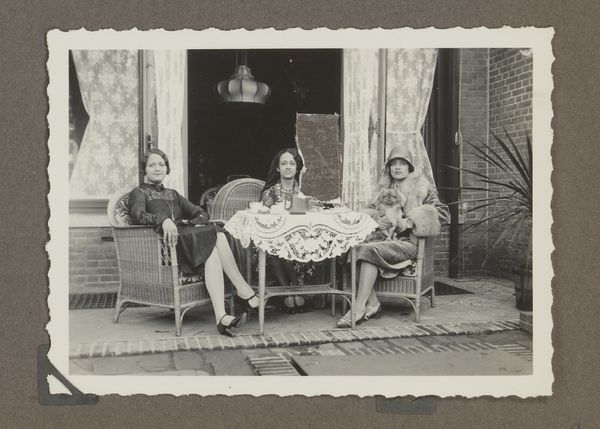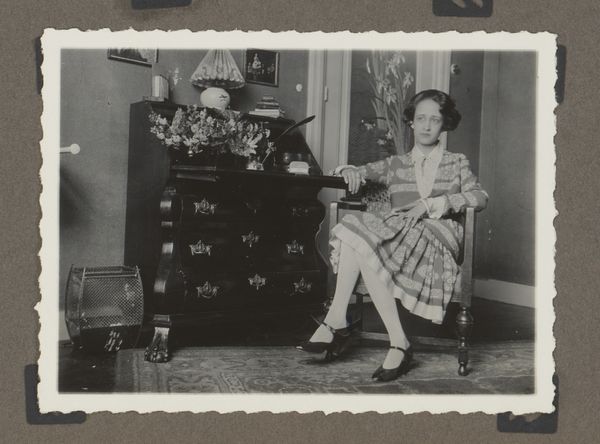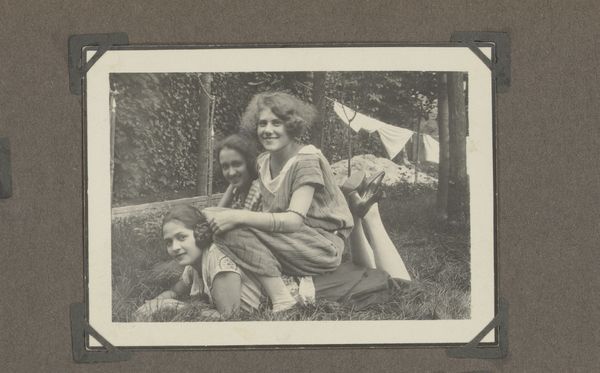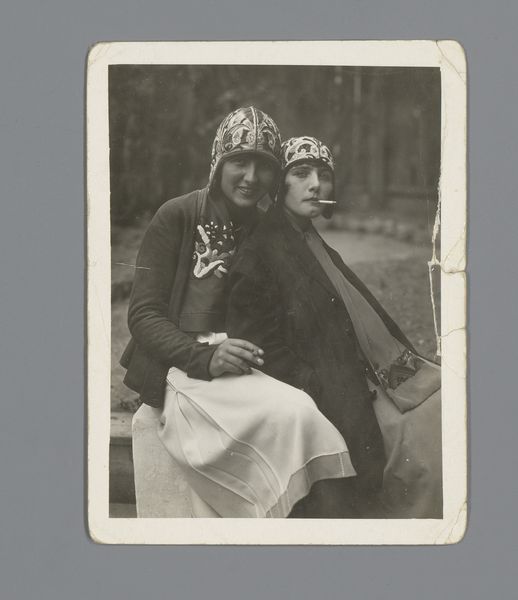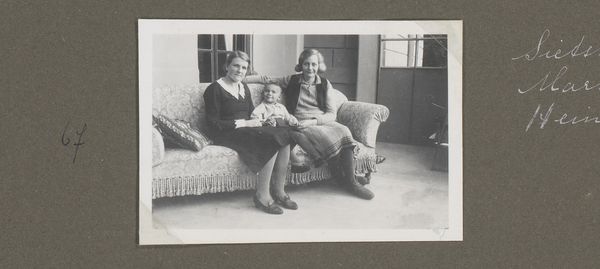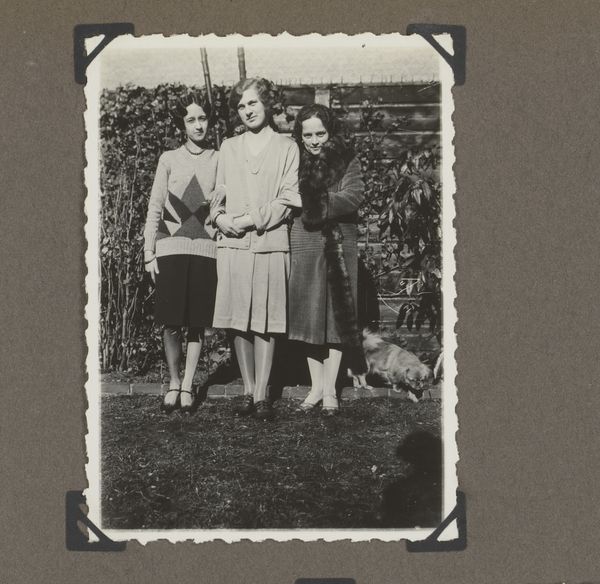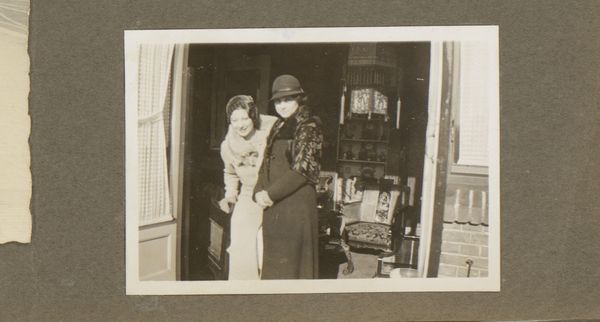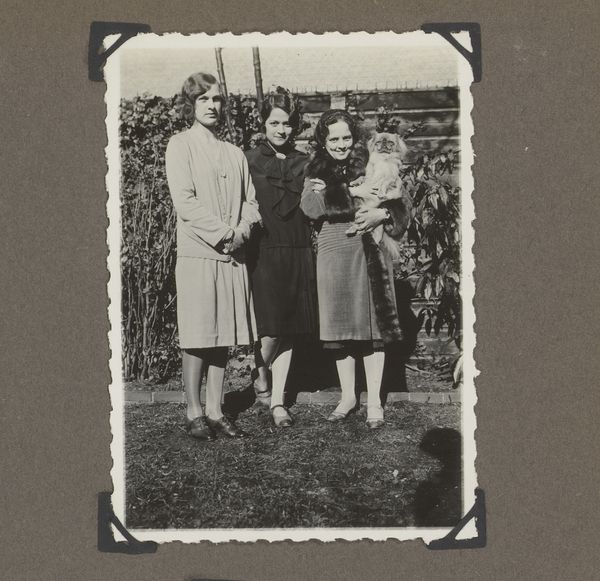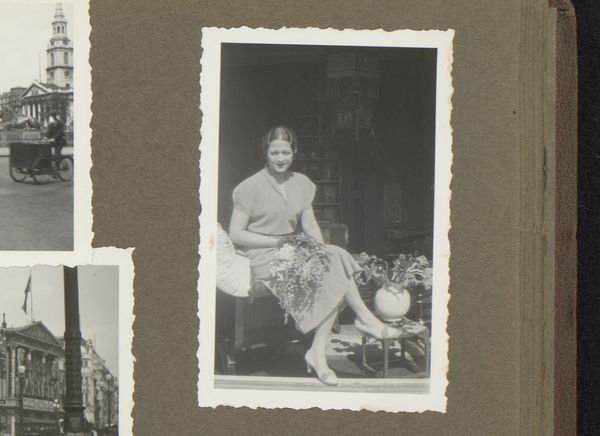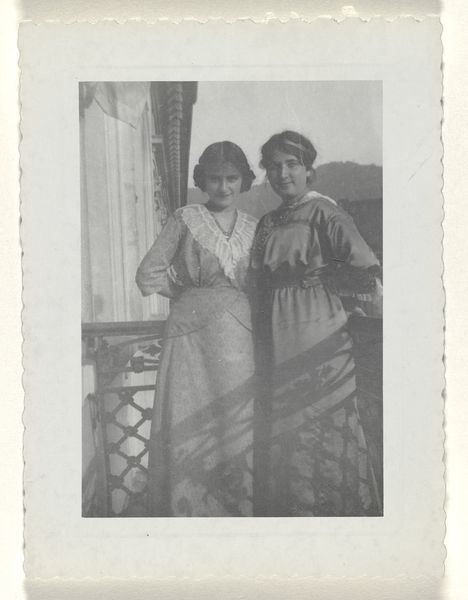
Corry Mak van Waay-Zulver en Wilhelmina van Zijll de Jong met een hond op een balkon 1930 - 1935
0:00
0:00
Dimensions: height 81 mm, width 113 mm
Copyright: Rijks Museum: Open Domain
Curator: This is a gelatin-silver print from between 1930 and 1935 entitled "Corry Mak van Waay-Zulver en Wilhelmina van Zijll de Jong met een hond op een balkon," featuring two women and a dog. It gives off a distinct historical feel, doesn’t it? Editor: Yes, immediately I'm struck by the sense of restrained elegance, a very characteristic interwar sensibility. The monochrome tones create this distance. There's also the obvious context to analyze – the lives and societal expectations of these women captured in the photograph. Curator: Precisely. And consider the materiality – the specific silver gelatin process. This points to the evolving technological processes in photography. Each step in its making—from the silver salts to the development—affected the final product. How fascinating that chemical processes can influence emotion. Editor: It’s intriguing to examine the poses as social markers, right? One woman sits formally in a chair while the other reclines, hugging a small dog, almost as if a prop. You think about questions surrounding representation of women, leisure, and class in that period. How they performed for the camera. Curator: Performance indeed. Yet it also subtly captures everyday domesticity through fashion and design of their dresses, shoes, and simple brick balcony, revealing small details. The materiality also holds significance in how photographic objects become treasured memory-keepers for some families. Editor: Definitely. There’s also a question to ask around what this photograph meant at the time, and what meanings we attach to it now, in our contemporary society. Who took this photograph? What kind of relationship did they have? Those absences in knowledge become points of connection to what we value. Curator: I’d agree. We’ve revealed how something as ostensibly straightforward as a vintage photograph operates as more than just documentation; it is cultural output whose story, in every iteration, gains nuanced richness through critical readings. Editor: Right, and how by paying attention to materiality and considering social conditions, we can unlock some new insights. A simple portrait becomes this intersection of class, identity, gender – all waiting for engagement.
Comments
No comments
Be the first to comment and join the conversation on the ultimate creative platform.
